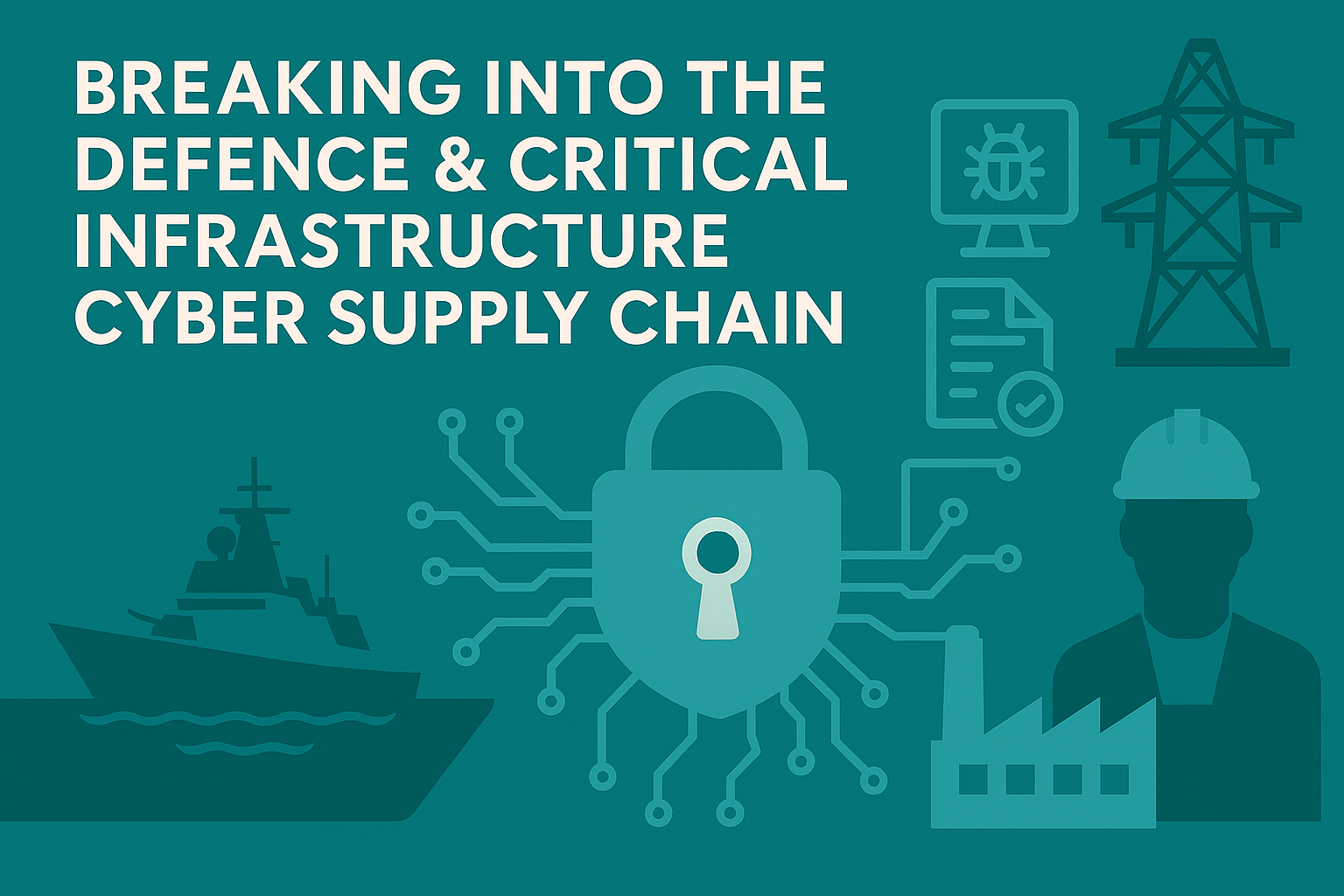Security clearances. Procurement portals. Legacy gatekeepers. Here’s how cyber vendors and professionals gain access to the UK’s most protected sectors. Selling into the UK’s defence, energy, transport, and national infrastructure sectors is not like selling into commercial enterprises. The barriers to entry are higher, the procurement cycles are longer, but the opportunities are vast and durable. Whether you’re a startup with a novel capability or a professional looking to work in high-trust environments, this guide explains how to navigate the real routes into defence and critical national infrastructure (CNI) supply chains.
Contents
- Contents
- 1. Understand the Market Structure First
- 2. Core Requirements and Procurement Gateways
- 3. Routes Into Defence and Secure Supply Chains
- 4. Specialist Pathways for Professionals
- 5. Where to Meet Buyers and Partners
- 6. What Defence and CNI Buyers Actually Want
- 7. Tips for Startups or New Entrants
- Final Thoughts
- References
1. Understand the Market Structure First
Defence Sector
- Governed by the MOD, but delivery runs through major primes (e.g. BAE Systems, QinetiQ, Thales)
- Entry as a Tier 2 or 3 supplier is common, often via frameworks, partner introductions, or defence accelerators
Critical National Infrastructure (CNI)
- Covers energy, water, transport, telecoms, financial services, and health
- Regulated by sector-specific regulators (e.g. Ofgem, Ofcom, NHS Digital, DfT)
- Procures via public tender (CCS, G-Cloud, DOS) and through systems integrators
2. Core Requirements and Procurement Gateways
Cyber Essentials Plus / ISO 27001 / IASME Assurance
Mandatory for most public sector frameworks and many primes
List X / Security Cleared Staff (SC, DV)
Required to work on projects involving classified or sensitive government information
→ Staff clearance must be sponsored, usually by an existing List X contractor or directly by a government body
G-Cloud / Digital Outcomes and Specialists (DOS)
Entry point to non-defence government buyers (e.g. NHS, Home Office, DfT)
JOSCAR (Joint Supply Chain Accreditation Register)
Used by defence primes to vet cyber and IT suppliers
Cyber Supplier to Government Scheme (CSGS)
NCSC-endorsed status used to streamline public sector cyber buying
3. Routes Into Defence and Secure Supply Chains
Via Primes (Tiered Supply Chain Entry)
- Engage with procurement teams at BAE, QinetiQ, CGI, Raytheon, Thales
- Show niche capability (e.g. OT security, detection engineering, zero trust architecture)
Through DSIT and MOD Accelerators
- DASA (Defence and Security Accelerator) – Rapid innovation funding, early trials
- Digital Security by Design (DSbD) – Hardware/OS-level innovation pipeline
- CyberASAP alumni often spin into dual-use technologies
By Partnering on SBRI or Innovate UK Projects
- Especially for secure-by-design, smart infrastructure, and data assurance
Via Cyber Clusters and Regional Hubs
- ScotlandIS (Glasgow), Midlands Cyber (Malvern), CyNam (Cheltenham)
- Clusters often pilot defence/CNI innovation projects with real buyer involvement
4. Specialist Pathways for Professionals
Get Security Cleared (via a sponsoring organisation)
- SC (Security Check) or DV (Developed Vetting) required for many defence/CNI roles
- Apply via employer or contractor agency (you cannot self-apply)
Work for a List X company
- These firms can sponsor clearances and expose staff to secure projects
- Often found among primes, specialist consultancies, or defence SMEs
Enter via MOD Digital (Defence Digital)
- Civil service roles for technical cyber experts, often with clear fast-track schemes
- Apply through Civil Service Jobs or Digital Marketplace
5. Where to Meet Buyers and Partners
- DPRTE (Defence Procurement, Research, Technology & Exportability)
- CyberUK – Strong MOD/NCSC presence
- Security & Policing (S&P) Expo
- CyNam, TechUK Defence Working Groups, and ADS Group Events
- Regional meetups with primes and integrators
6. What Defence and CNI Buyers Actually Want
- Low-risk delivery partners, Can you operate in classified or high-compliance settings?
- Secure-by-design thinking, Particularly in OT, legacy systems, and resilience
- Interoperability, Solutions that plug into MoD, NHS, or energy ecosystems
- Auditability and assurance, Logs, monitoring, supply chain visibility
7. Tips for Startups or New Entrants
- Partner before you prime, Subcontracting gives early exposure
- Map to known frameworks, Align to NIST 800-53, NCSC, or ISO controls
- Be patient but persistent, Entry can take 12–24 months
- Get advice from ADS Group, UK Defence Solution Centre, or regional defence clusters
Final Thoughts
The UK’s defence and CNI cyber markets may look opaque, but they are accessible. With the right credentials, partnerships, and patience, even small firms or professionals can earn their place in high-trust supply chains.
It’s not about knowing someone at MOD, it’s about showing capability, credibility, and compliance.
References
- Inside the UK Cyber Ecosystem: A Strategic Guide in 26 Parts
- The Insider’s Guide to Influencing Senior Tech and Cybersecurity Leaders in the UK
- Breaking Into the Defence & Critical Infrastructure Cyber Supply Chain
- Cyber Across Global Governments: International Cooperation and National Strategies
- Major Cyber Vendors and Service Providers in the UK
